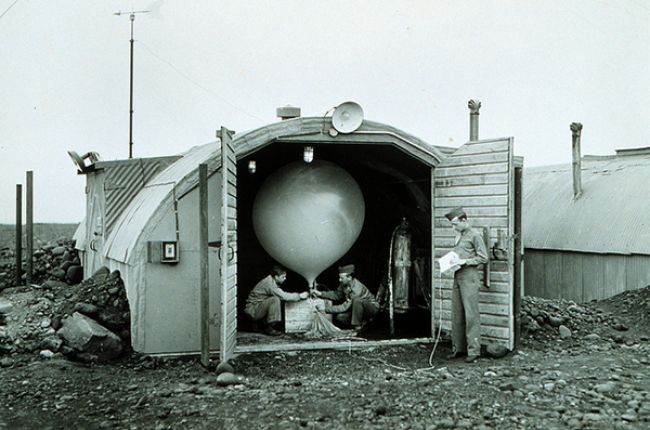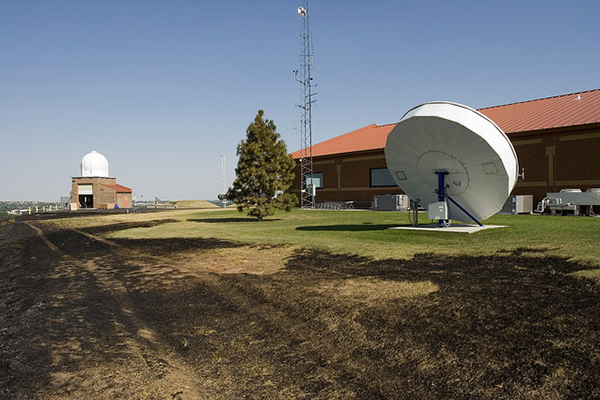How Technology Changes Over The Years Has Affected The Weather Forecasts
How has weather forecasting changed over the past two hundred years?
![]() PDF version
PDF version

Most people are interested in what the weather will be tomorrow or in the adjacent few days. Predictions of the conditions for up to a week in the hereafter are called short-term forecasts. Meteorologists also effort to brand long-term forecasts of the weather for a calendar month, a season, or a whole year.
In before times, before the telegraph and the telephone were invented, weather condition observations from faraway places could non be collected in one place soon after they were made. In those times, the only way of predicting the weather was to use your local experience. Given the weather on a item day, what kind of weather condition commonly follows during the next day or 2? As you tin can imagine, the success of such forecasting was not a lot better than making a random judge.

Credit: Eric Kurth,
NOAA/NWS/WFO/Sacramento
Beginning in the belatedly 1800s, weather condition services began to be able to get together conditions information from weather stations located all over the country. That immune meteorologists to plot weather maps and see weather condition systems moving from place to identify. That improved the accuracy of forecasts.
During the 1900s, meteorologists adult even amend tools for observing and predicting the weather. Special instruments measure weather in the atmosphere far in a higher place the ground, and satellites orbiting the Globe transport dorsum images of the weather over large areas. In addition, computer models are now existence developed for weather forecasting. In a computer model, the important processes of the atmospheric condition are built into the model. The model starts with the present atmospheric condition and tries to simulate how the weather will develop in the hereafter. Today's figurer models practise a very good chore of predicting the weather for the adjacent few days.
Source: https://www.americangeosciences.org/education/k5geosource/content/weather/how-has-weather-forecasting-changed-over-the-past-two-hundred-years
Posted by: mcdanielmorly1947.blogspot.com


0 Response to "How Technology Changes Over The Years Has Affected The Weather Forecasts"
Post a Comment